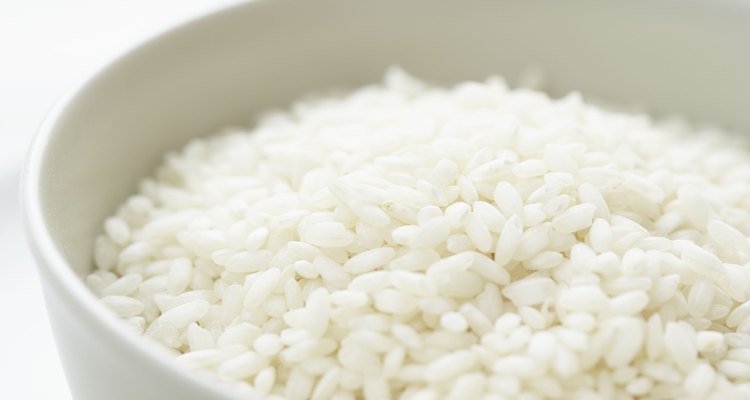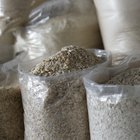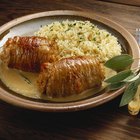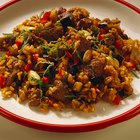
Rice, a highly versatile cereal grain, makes a common staple throughout the world. It's a good source of protein and carbohydrates, and a blank canvas that can be incorporated into a variety of sweet and savory dishes. Most rice varieties can be boiled or steamed; the differences in cooking method come down to texture and use.
Boiling Method
Boiling rice requires placing it in a pot of water and boiling the grains until they're soft enough to chew. Measurements don't matter much when boiling rice, but you need enough water to cover and boil it, without all the water evaporating off. While boiling, watch the rice to ensure it's expanding and test the grains for softness. Once done, strain the rice and serve.
Steaming Method
Steaming rice requires precise measurements. In a rice cooker, you combine measured rice and water and allow the machine to boil, simmer and steam. The ratio of water to rice varies depending on the type, but most require a ratio of 1 cup rice for every 2 cups of water. When steaming rice on the stove, you first bring measured water to a boil, then add the rice. Reduce the heat and allow it to simmer until all of the liquid is absorbed. Take the pot off the stove and allow it to rest for five minutes before fluffing the rice with a fork -- no straining is required.
Texture
Boiled rice is tender and has more aroma than steamed rice. Most boiled rice recipes call for pre-rinsing the rice before boiling it. This removes the starch from the exterior of the grain and the result is a less sticky, more separated, non-mushy rice. Simmered or steamed rice tends to be sticky, softer and doesn't have as much flavor as boiled rice.
Use
Steamed and boiled rice can be used in similar recipes, but there can be distinct uses for both types. Boiled rice is common in Indian and Thai cuisine because of its separated grain and aromatic flavor. Steamed rice can be used in sushi, pudding, cakes, desserts, casseroles and soup. Both boiled and steamed rice can be served with meats, vegetables and sauces. Steamed rice absorbs sauces better than boiled rice but can also become soggy if left in a soup or sauce.
Considerations
While most rice varieties can be boiled or steamed, some do better than others. Glutinous varieties -- those that are sweet and sticky -- such as Thai purple rice and sushi rice work best when steamed. Basmati and jasmine rice get a fluffier texture and better aroma when boiled. Long grain and medium-grain rice cooks best when steamed.
Related Articles

How to Cook Long Grain Rice

How to Cook Rice in a Steamer

How to Cook Rice Flakes

How to Boil Rice

How to Make Rice With a Bamboo Steamer

How to Cook Golden Rose Rice

How to Cook Brown Basmati Rice

What Does It Mean to "Blanch Rice"?

Does Rice Taste Different Depending on ...

How to Cook Japanese Rice

How to Cook Rice Without a Rice Cooker

How Long After a Sell-By Date Can You ...

How to Cook Rice in Foil

What Is a Semibrown Rice Zojirushi?

How to Make Sticky Rice Recipe
The Best Pot to Cook Rice

What Rice Takes the Longest Time to ...

How to Make Your Own Rice Milk

How to Dry Out Sticky Rice

Brown Basmati Rice Cooking Directions
References
Writer Bio
Shailynn Krow began writing professionally in 2002. She has contributed articles on food, weddings, travel, human resources/management and parenting to numerous online and offline publications. Krow holds a Bachelor of Science in psychology from the University of California, Los Angeles and an Associate of Science in pastry arts from the International Culinary Institute of America.
Photo Credits
Jupiterimages/Photos.com/Getty Images